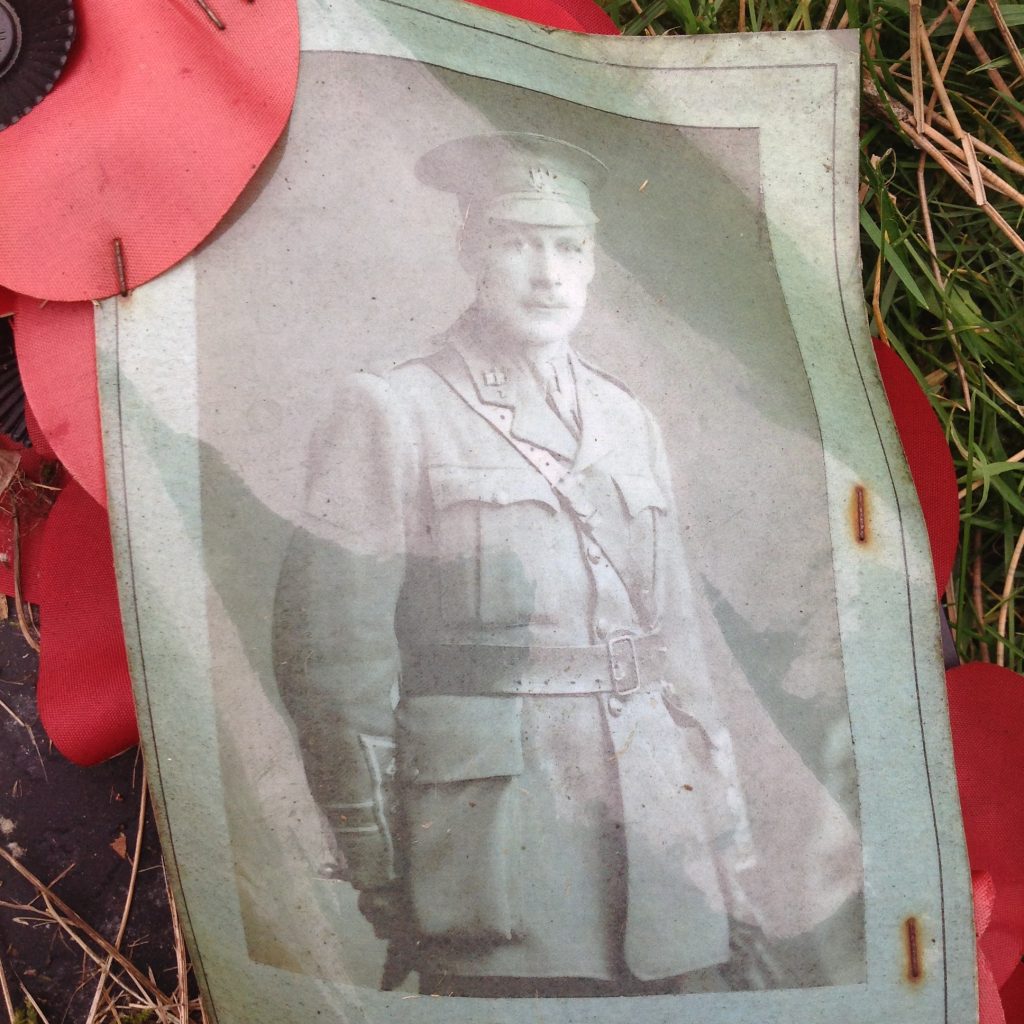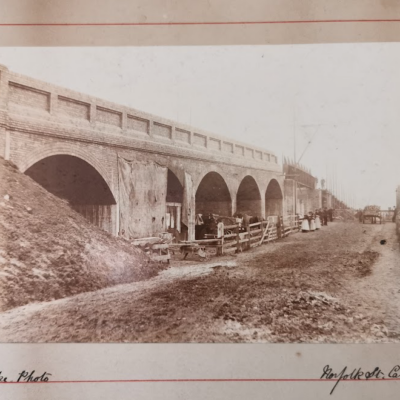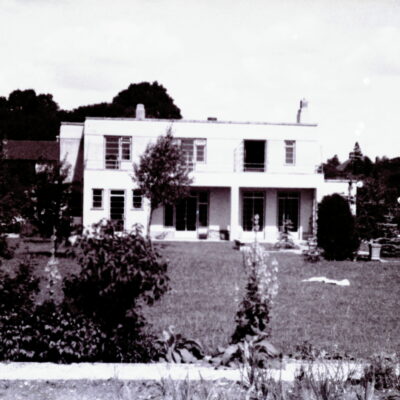Search by topic
- archaeology
- architecture
- bricklayer
- Building of Local Interest
- carpenter
- church
- crime
- dressmaker
- fire
- Great Eastern Railway
- listed building
- medieval
- oral history
- Public House
- Rattee & Kett
- Religious House
- Roman
- scholar
- school
- Then and Now
- tudor
- women
- work
- world war one
- world war two
Search by text
 Arthur Chaplin, 248 Hills Road
Arthur Chaplin, 248 Hills Road248 Hills Road, Dalkeith/Smalldene
History of 248 Hills Road
1911
Arthur Hugh Bales Chaplin, 35, buyer drapery, born Leytonstone
Amelia Chaplin, 33, born Peterborough
Eileen Mary Chaplin, 1, born Trumpington
Annie Fitch, 21, general servant, born Devon
Dorothy Annie Cox, 20, nurse, born London
Arthur Hugh Bales Chaplin, b. 1876, worked in his father’s drapery business as a buyer. By 1911 he was married to Amelia with a daughter Eileen. At some stage he became a partner in Robert Sayle. Before the war he was a lieutenant in the Cambridgeshire Volunteer Regiment. He played an active role in the recruiting rally which took place in Cambridge in January 1914. He applied for a commission and joined 1st Bttn. Cambridge Regiment as a Captain and went to France in early 1915. He was invalided home with double pneumonia within a month or so. He returned to France in February 1916 and was promoted to major on 31st March 1916. He was wounded in action on 14th March 1917 and was admitted to hospital in Boulogne with wounds in the left arm, leg and foot. He was brought over to England on Easter Monday and taken to the Countess of Ridley’s Hospital at 10 Carlton House Terrace in London, where he died on 21st May 1917 aged 41. He was buried in Trumpington cemetery.
The following has been written by James Berry (2024):
Arthur Hugh Bales Chaplin was born on 28 or 29 December 1875 in Leytonstone. He was always known as “Hugh”. His third name, Bales, had been his mother’s maiden name: she was Alice Mary Bales. His father, Arthur Edward Chaplin, was the son of a wine merchant in Ipswich and owned a drapery shop in Leytonstone. In 1884, the family moved to Cambridge, after Hugh’s father became one of three partners owning and operating the Robert Sayle store in Cambridge, which sold furs, ladies’ and children’s wear, carpets, furnishing materials, household lines and millinery. The family home was originally “Leyspring” on Trumpington Road and then in the early 1900s, “Dalreagh” on Chaucer Road. Both houses were substantial detached properties. The Bishop family lived next door to “Dalreagh”, in “Edwinstowe”, and reappear later on in this account.
Hugh Chaplin was educated at the Perse School and at Old Ryde School, Branscome Park, where he became captain of the school. He followed his father into the drapery business. He was a lieutenant in the Cambridgeshire Volunteer Regiment, in which had taken a keen interest from boyhood. He lived with his parents until 1902, when he moved to Southport. He was soon back in Cambridge in 1903, when he was appointed a partner in Robert Sayle. “Mr Hugh” was about 27 years old at the time, good-looking, friendly and energetic, and was very popular both among the staff and outside the business.
Hugh married Amelia Sarah Mcavoy in 1907, and the couple lived together in “Dalkeith”, 24 Hills Road, a leasehold property owned by Trinity College.
In 1910, the couple had a daughter, Eileen Mary Chaplin. The 1911 census lists the occupants of “Dalreigh” as Hugh, Amelia and Eileen, together with Annie Fitch, a general servant, and Dorothy Annie Cox, a nurse. In 1911 or 1912, a son was born, Jack. Like his father, Hugh was a Free Mason, was initiated as a member of the Cantabrigia Lodge in 1911, and later became Junior Warden. Both Hugh and his father drove to work at Robert Sayle, at a time when very few households owned cars, and in 1914 Hugh had a brick garage built, which still survives.
When war broke out on 4 August 1914, Hugh Chaplin was among the first to report to the local recruiting office, and he took with him almost every man of suitable age working in Robert Sayle. He was commissioned as captain into the Cambridgeshire Regiment, and acted as adjutant in the recruiting campaign. He was posted to France on 25 March 1915, but after about six weeks fell ill with double pneumonia and was sent home to recuperate. He returned to the front as soon as he had recovered. On 31 March 1916, he was temporarily promoted from captain to major. On 14 March 1917, he was seriously wounded in the left arm, leg and foot. After treatment at a base hospital in Boulogne, he was taken back to the Countess of Ridley’s Hospital in London, where he died on 21 May, aged 41. He was buried at the Trumpington New Cemetery with full military honours.
In his will dated 8 February 1917, he left all his possessions to his wife Amelia. He appointed The Capital and Counties Bank as his executor, and instructed them to sell his property, and pay all the income to Amelia. He made specific provision for his daughter Eileen but curiously didn’t mention his son Jack. On 10 May 1918, a rather sad advertisement appeared in the Cambridge Daily News: “Wanted Governess for 2 children aged 9 and 7. Mrs Chaplin, “Dalkeith”, Hills Road, Cambridge.” Amelia stayed on at “Dalkeith” for a couple of years, but by 1920, Anna Maria Bishop moved in, changing the name to “Smalldene”. Anna was herself a widow, whose husband Arthur Wallis Bishop had died in 1919. The Bishops had lived at “Edwinstowe”, next door to the Chaplin family home at “Dalreagh”.
Four months after Hugh Chaplin’s death, on 26 September 1917, his younger brother, Charles Montague, was reported missing, believed killed. He had studied as a surveyor and in 1906, when he was about 24 years old, he had emigrated to Canada to become a farmer. Soon after the outbreak of war he had come back to England with the Canadian forces, as a private in Princess Patricia’s Light Infantry. ln November 1916 he was wounded and, when he had recovered, was posted to a cadet school, from where he was commissioned as Second Lieutenant and attached to the Cambridgeshires. He was sent overseas immediately and survived only six months. He was unmarried.
Fortunately, Hugh Chaplin’s brother-in-law, Frank Sutherland Scruby, survived the war. He took an BA at Selwyn College in 1902 and spent the next 22 years teaching at schools in Australia, England and Nigeria. Frank married Hugh’s sister, Mary Lucretia Chaplin, in 1911. He served in the war from 1914 to 1919, was a captain in the Cambridgeshires and was awarded an OBE in 1919. After the war he was an Inspector of Industrial Schools under the Home Office.
Hugh Chaplin’s father continued as governing director of Robert Sayle, which became a limited liability company in 1919, and imprinted his personality on the store over 50 years. An imposing figure with a long white beard, he was a formal man who was reputed to have boasted of saving oil from sardine cans with which to lubricate his lawnmower. Arthur Chaplin evidently evoked not only respect but also liking in his employees. He was a man of very strong character with a tremendous personality and was well remembered 30 or more years after his death by people who knew him in their young days. But although he was a firm disciplinarian and was regarded as an exceptionally shrewd man of business, he was nevertheless held to be fundamentally kind and thoughtful for the well-being of his staff.
Arthur Chaplin’s wife died in 1923 and his daughter Alice Caroline Chaplin died in 1926 at the age of 39, so Mary was the only of his four children to survive him. Arthur died in 1934.
Contribute
Do you have any information about the people or places in this article? If so, then please let us know using the Contact page or by emailing capturingcambridge@
License
This work is licensed under CC BY-NC-SA 4.0











